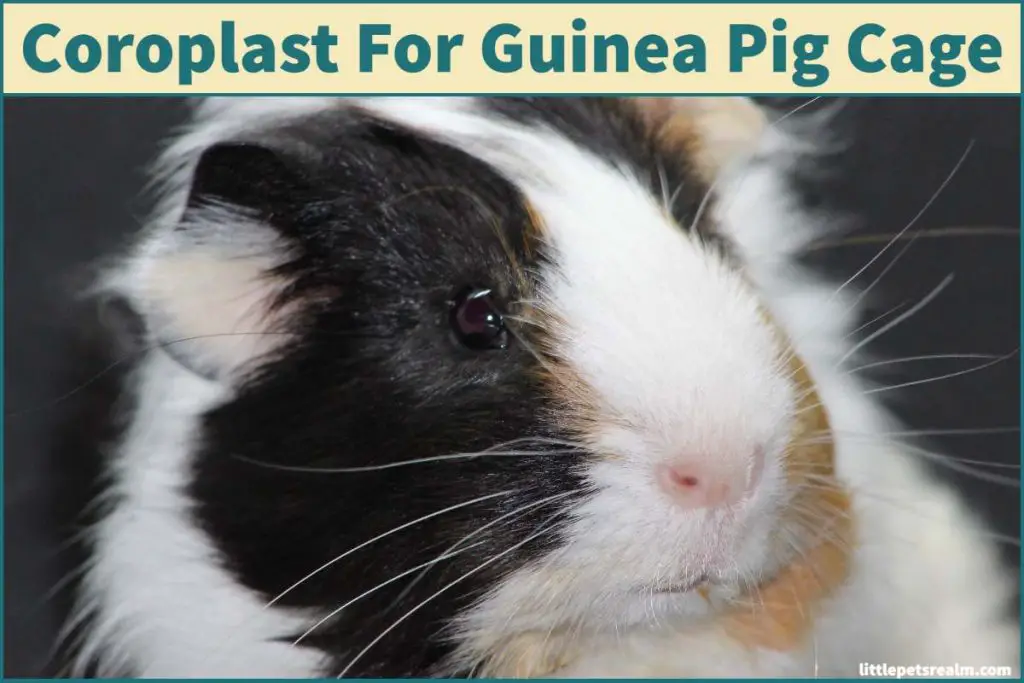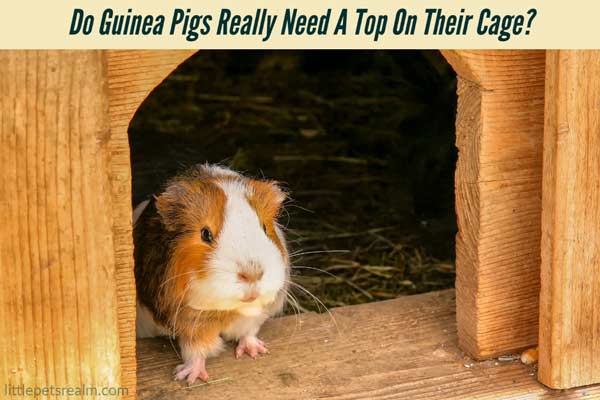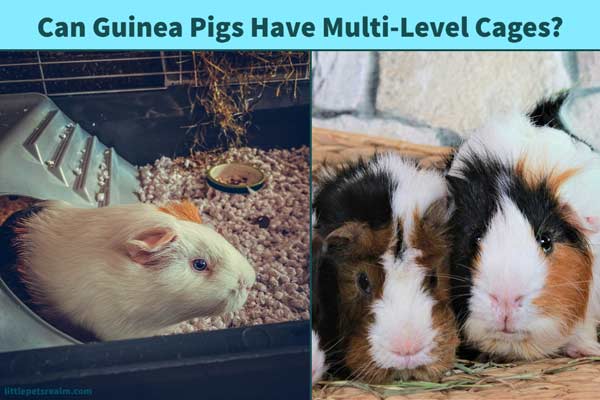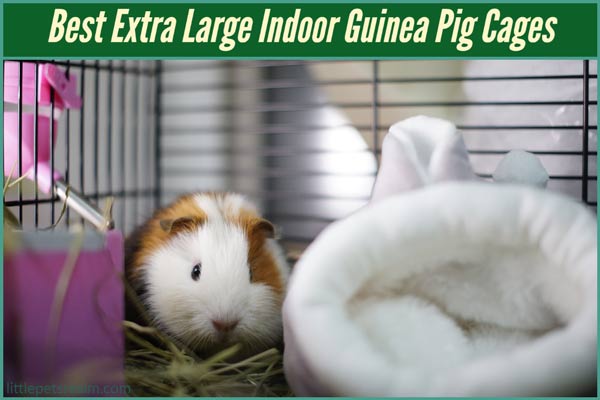As the cost of some guinea pigs’ bedding and liners is high, you may be looking for a cheap alternative like coroplast for guinea pig’s cages. But, can you use coroplast in a guinea pig cage?
Coroplast is a great option to prepare or line the floor for a guinea pig cage because it’s easy to bend and set perfectly for the corner of a cage. Moreover, coroplast is resilient, stiff, chemical resistant, and waterproof which’s beneficial for your guinea pigs.
However, it also has some drawbacks just like any other material.
You can also check the best flooring materials for guinea pigs.
Let’s find out the pros and cons of coroplast for guinea pigs and also know about when and how you can use coroplast in a guinea pig’s cage.
Table of Contents
What’s coroplast for a guinea pig’s cage?

Coroplast is made of tough and lightweight plastic that looks similar to corrugated cardboard. Most brands use polypropylene copolymer to build the coroplast. Coroplast is stiff, resilient, chemical resistant, UV protective, waterproof, and easy to use for guinea pig cages. They are available in different colors.
Is coroplast safe for guinea pigs?
Coroplast is safe for guinea pigs because it’s made of a natural polymer that’s chemically inert and non-toxic when it’s used in contact with foods. Besides, it’s unlikely that guinea pigs eat a piece of coroplast. It was also found that it didn’t cause any harm to the guinea pigs when they chewed on the edge of the coroplast.
This is also a very rare circumstance. However, you can prevent it if you design the cage properly.
The Guinea pig’s owner uses the coroplast for more than a decade now. We found no such report of guinea pig illness or injuries because of using coroplast.
Our recommended product
Midlee Corrugated Plastic Cage Liner
Why should you use coroplast sheets for a guinea pig cage?
Here are the benefits of using coroplast sheets for the guinea pig cage floor.
Lightweight and tough
The weight of a full 4×8 foot coroplast sheet is only about 4 pounds. So, it’s easy to cut, and bend. You can also carry it easily.
Stiff and Resilient
Coroplast is stiff and resilient enough to prevent unexpected bent or deformed while using it to build the floor for a guinea pig cage.
Easy to bend
Coroplast is foldable. You can bend a coroplast sheet at a 90-degree angle easily to prepare the corner of the guinea pig cage. It works perfectly.
Easy to cut
Coroplast sheets can easily be cut into pieces with a razor blade, scissors, or a craft knife.
Waterproof
Coroplast doesn’t absorb water which is a must need for a guinea pig cage. A wet floor can make your guinea pigs sick.
Resistant to chemicals
Chemicals such as guinea pigs’ urine or substances in their poops don’t get absorbed in the coroplast.
Easy to clean
Coroplast is easy to clean as it’s don’t absorb water and is resistant to chemicals and other substances.
Easy to transport
As it’s light in weight and resilient, you transport it easily.
Available in different colors
If you want to make the guinea cage colorful or try different colors after a while, coroplast can be a great choice for you, as it comes in many colors
Allow using more than one sheet
If you are planning to build a large guinea pig cage, coroplast can also help you. You can combine more than one coroplast and cut them into several pieces to give it the final design without any issue.
Environment friendly
Coroplast is environment-friendly because it’s recyclable and you can clean it quite easily.
Easy to get
You can get coroplast wherever you are in the world. It’s available in different sizes and colors. Also, there are different renowned brands that make the product.
Order it online today to get it right now.
For which purposes can you use coroplast in the guinea pig’s cage?
You can use coroplast for the following purposes inside a guinea pig’s cage.
Lining the cage floor
Most commonly coroplast is used to line the floor of the cage for guinea pigs. They are stiff, resilient, and waterproof, so you don’t need to be worried about getting the floor wet or having a bad odor.
Also, read my other article on what to put at the bottom of the guinea pig’s cage.
Preparing the bedding
Coroplast acts as a perfect base for the bedding. If you use a newspaper, it may not serve the purpose correctly.
If you aren’t sure which bedding material you should use for the, check out my other articles on the best fleece, paper, and wood bedding.
Making the ramps
If you build a multi-level cage, a coroplast sheet can help make the cage ramp. It can make a good cover of the ramps. You can bend the sheet easily to make a wall for the ramps so that your little piggies don’t fall down from the ramp.
Read more about ramps for guinea pigs.
Cover up the corner of the cage
It’s not so easy to cover up the corner of the cage. The coroplast sheet can be bent nicely to cover up the corner.
Building multi-level cage
The floor of the top levels of a multi-level cage can be covered with a coroplast sheet to make it flat and comfortable for your guinea pigs. If you are using wire mesh to build the floor, it can also help get rid of irregular surfaces and allow your guinea pigs to walk freely.
Read more about the multi-level guinea pig cage.
How to use coroplast for a guinea pig cage?
Let’s know how to make a coroplast guinea pig cage.
1. Take out the coroplast sheet
First of all, open the pack and take a sheet. The sheet should be at least 650 grams/m2 and solid in structure.
If you haven’t bought it yet, check out the best coroplast for guinea pigs.
2. Measure the required coroplast sheet
Take a pen, tape measure, and yardstick to measure and mark the coroplast sheet to cut it perfectly. Now the question is, How to measure coroplast for a guinea pig’s cage?
First, measure the length and width of the inside of the cage appropriately and put a mark around the coroplast sheet. You have to leave space for connectors. Sheets will be placed inside them.
Then, add 12 inches to the length and width for 6 inches wall all the way around and make a mark on the coroplast sheet according to it. You have to cut the sheet along this dimension.
Here are the measurements for 14″ grids.
| Cage size | Measurements |
| 2 x 3 grid cage | 41″ x 27″ |
| 2 x 4 grid cage | 56″ x 27″ |
| 2 x 5 grid cage | 71″ x 27″ |
| 2 x 6 grid cage | 84″ x 27″ |
After adding 12 inches to the main dimension, here are the cutting dimensions.
| Cage size | Cutting dimensions |
| 2 x 3 grid cage | 53″ x 39″ |
| 2 x 4 grid cage | 68″ x 39″ |
| 2 x 5 grid cage | 83″ x 39″ |
| 2 x 6 grid cage | 96″ x 39″ |
Add a total of 18 inches if the cage goes against a wall to prevent hay spillage.
Also, keep in mind that 96 inches are the length of a full coroplast sheet.
3. Cut the coroplast sheet
After you complete all the measurements and make marks on the coroplast sheet, you have to cut the sheet. But, how to cut coroplast for guinea pig cage?
Take heavy-duty scissors, a craft knife, or a box cutter. Then, cut the coroplast sheet to outer dimensions with one of these along the line that you have drawn measuring the cage. You can also use regular scissors if you are comfortable with them.
4. Measure and score to make the walls
Now, you have to measure the coroplast sheet again to build the wall around the sheet. Draw lines with a pen 6 inches in from all sides to inner dimensions.
Next, use a box cutter or a razor blade to score along the lines. You can practice it on a scrap piece before doing yat on the original sheet or you can’t cut all the way through.
5. Cut the corners to make the flaps
After measuring and scoring the coroplast sheets cut all the way through it at each corner. Remember, it’s 6 inches as you measured earlier. This will help make the flap.
6. Fold the edges
To cover up the corner, fold the edges according to the measurements from the Score-line and form a box.
7. Tape the flaps or insert the locks
Take a clear packing tape and secure the flaps with it.
If your coroplast sheet has locks, insert them into the slots. The direction is towards the inside of the cage from the outside. Go straight ahead and ensure that the cover is fully fixed.
Some coroplast sheets such as Kavee coroplast have locking slots that make them easier to set up. Even if it doesn’t have it, you set it up quite easily.
8. Set up the sheet on the cage floor.
After you have prepared the coroplast sheet, put it on the cage floor and set it up properly according to the plan.
If your sheet has locking slots, close the locking slots on the cage side.
9. Prepare the second coroplast sheet
Take another sheet and prepare following the same method that you did for the first one.
10. Place the second sheet and combine two sheets
Next, you have to place the second sheet in the cage. If you place the first sheet on one end, the other sheet should be nearly touching each other. Open ends of the sheets must be placed where they overlap. Also, close the locking slots on the cage side only or use the packing tape to combine them.
If you have completed the setup, you may also need to check out what do guinea pigs need in the cage.
How often should you clean the coroplast floor liner for guinea pigs?
You have to clean the coroplast floor liner weekly with a vinegar-water mix and other cleaning materials to maintain hygiene. However, you have to clean the pee or do poo picking regularly to keep the floor clean and free from bacteria and germs.
Will guinea pigs eat coroplast?
It’s unlikely that a guinea pig thinks of eating a coroplast sheet. Rarely, a guinea pig may decide to chew the edge of the sheet for their chewing satisfaction, but may not eat it. So far there have been no reports that a guinea pig got ill after chewing a piece of coroplast sheet. Even there is no report that a guinea pig eats it.
But, you can be extra aware if you want and take steps to prevent it.
So, how to prevent guinea pigs from chewing coroplast sheets?
If you see your guinea pigs chewing the edge of the coroplast, do the following.
1. Attach a wood dowel
First of all, you have to do something with the edge of the coroplast to prevent the guinea pig from chewing it. A simple way is to put a wood dowel along the edge. Make sure the length is appropriate and covers the whole area. This will gradually stop the habit.
2. Keep hay available
Ensure that grass hay is always available in the cage. This is one of the most essential substances in the guinea pig house. If they are out of it, they may decide to chew the edge of the coroplast.
3. Put a wooden hidey house
Make sure you place one wooden hidey house so that the guinea pig can gnaw on to it. This will help them keep their incisors ground down
If you are planning to put a chew toy, it won’t help you because guinea pigs don’t use them. Also, the same thing goes for small blocks of wood or sticks.
FAQ on using coroplast for guinea pigs
What thickness coroplast for a guinea pig cage?
Normally the thickness of the coroplast for a guinea pig cage is just under a quarter of an inch or about 4mm.
How much coroplast do I need for a 2×4 cage?
You will need a 68″ x 39″ coroplast to line a 2×4 guinea pig’s cage with 6-inch sides. Here, the main dimensions of the inside of the cage are 56″ x 27″. You have to add 12 inches to the length and width to create 6 inches sides all the way around. As coroplast comes in 4 feet x 8 feet sheets, you will need 1 full sheet and 1 half sheet.
How much coroplast do I need for a 2×5 cage?
For a 2×5 grid cage with 6 inches sides, you will need 83″ x 39″ coroplast to make the base. Ideal dimensions for 2 x 5 grid cage is 71″ x 27″. Add 6 inches on all the sides with it to make the wall.
Where can I buy coroplast?
You can buy the coroplast from a local sign shop order now at the Online store. You will get different types of coroplast in different sizes.
What can I use instead of coroplast for the guinea pig’s cage?
Coroplast is not the only one by which you can line the floor of the guinea pig’s cage. You can use other alternatives such as different types of papers, waterproof mattress liners, sheets of linoleum, tarps, waterproof drop cloths, or shower curtains.
Takeaways
You can use coroplast sheets as cage liners safely in a guinea pig’s cage as they are great to cover up the full floor including the corners. Furthermore, they are stiff, waterproof, resilient, easy to use, easy to clean, and comfortable for guinea pigs. You can also use coroplast sheets to cover the ramps or floor of the top levels of the cage.

I am Pallab Kishore, owner of Little Pets Realm. I share important tips, advice and answer all the queries to solve various problems about small pets such as guinea pigs and hamsters on this website.




